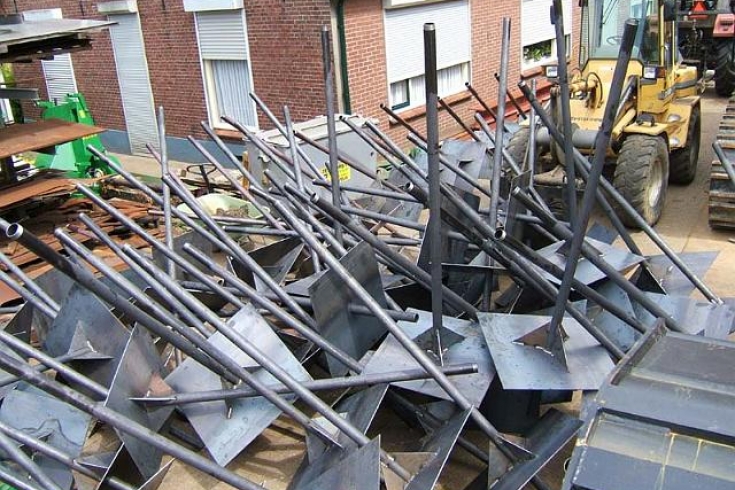A settlement beacon is a measuring pole with large footplate used to determine changes in the level of deeper soil layers when subject to forces caused by filling. It is also possible to determine more accurately the amount of filling material needed.
A settlement beacon consists of a square or round steel footplate of 0.5 to 2 m in diameter. In the centre of this plate a metal pipe is welded on to it vertically. This pipe may be extended during the filling process. The footplate is placed horizontally on a soil layer on which a mass of filling material will be put.
The weight of the filling material makes the underlying layers to sink or move. In unstable peat soil the setting can be many decimetres. In sand the setting is generally limited to a couple of centimetres. The footplate of the settlement beacon sinks during the setting of the soil and pulls the measuring pole with it during the process.
The height of the top of the measuring pole has been accurately measured beforehand. By repeating this height measurement in the course of time, it is possible to determine the rate and amount of setting of the soil. The use of settlement beacons makes it possible to calculate when the setting has sufficiently progressed to proceed the construction works.
The steel footplates are made of 5 mm thick sheet steel and are either square or round. Typical standard footplate sizes are 500 x 500 mm, 1000 x 1000 mm and round 1000 mm. The measuring rod is made of 60.3 × 3.65 mm steel pipe. The footplate comes standard with a 2500 mm long measuring rod welded to it. 500 mm of it protrudes through the plate for extra stability. Extension rods are available in lengths of 1000 and 2000 mm and come complete with a coupling sleeve.




